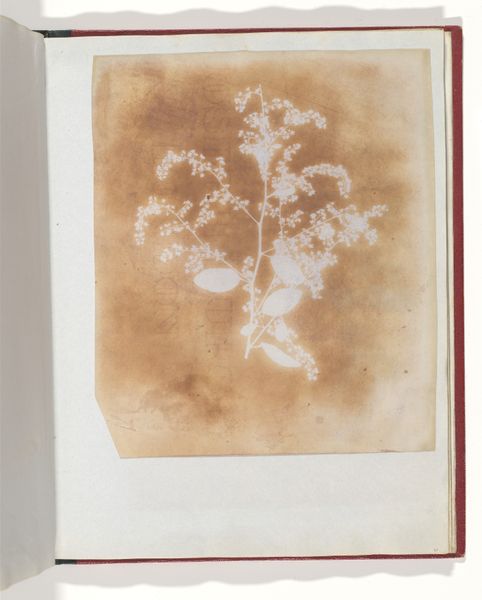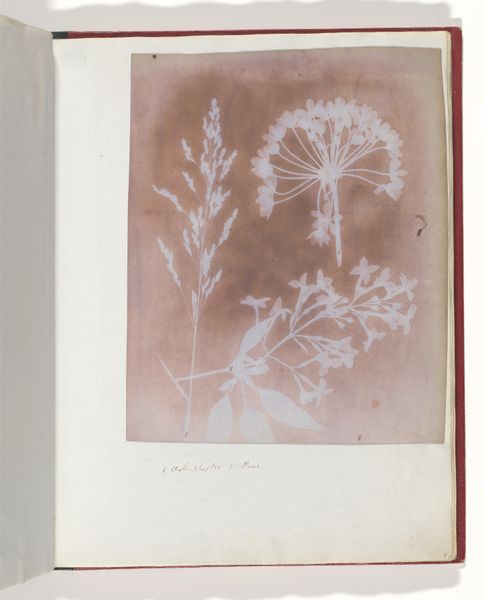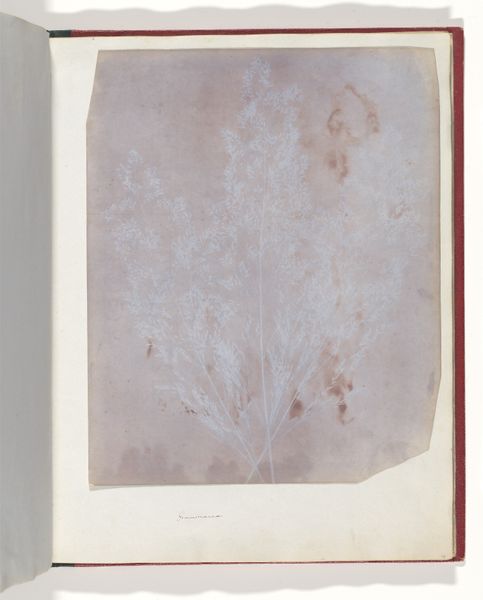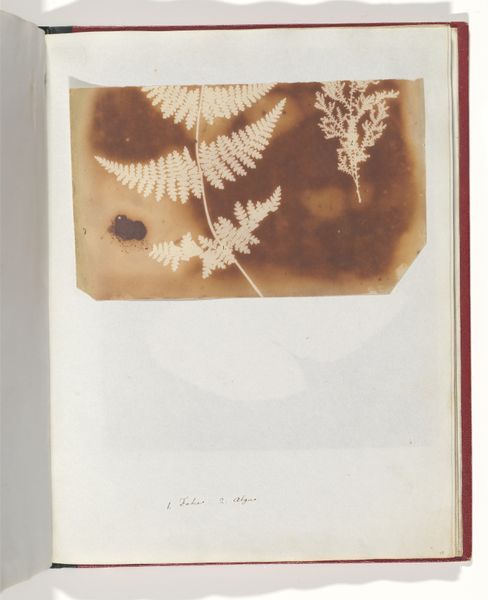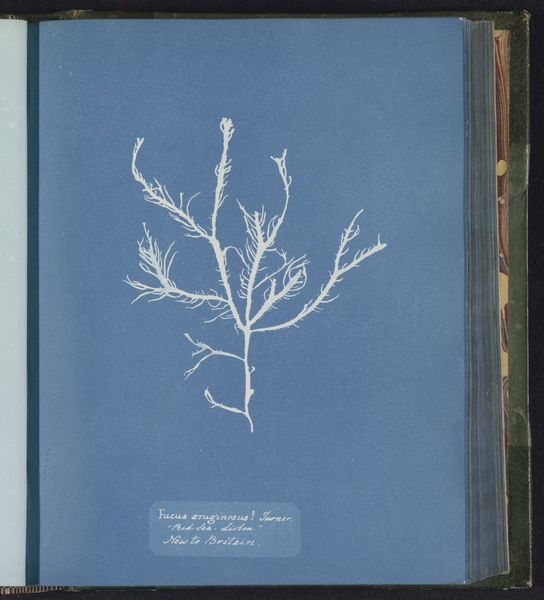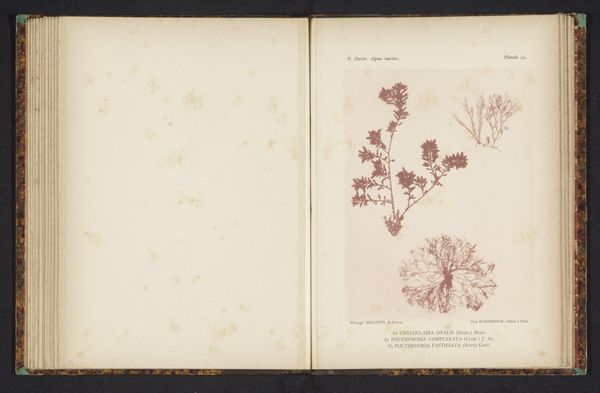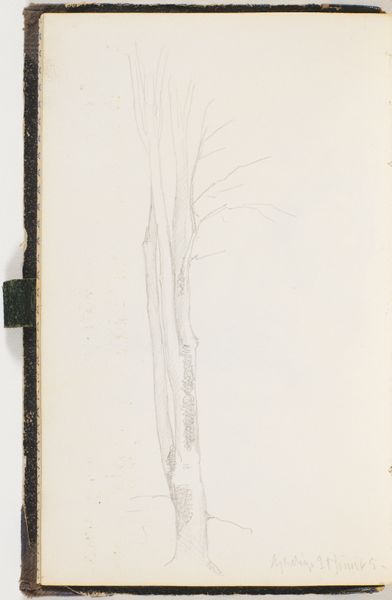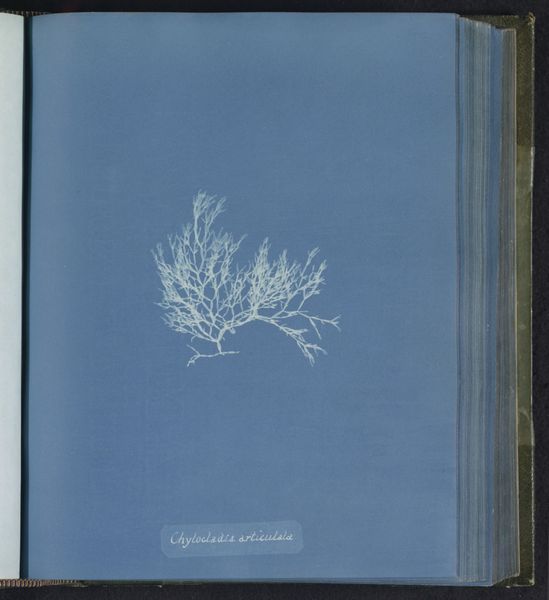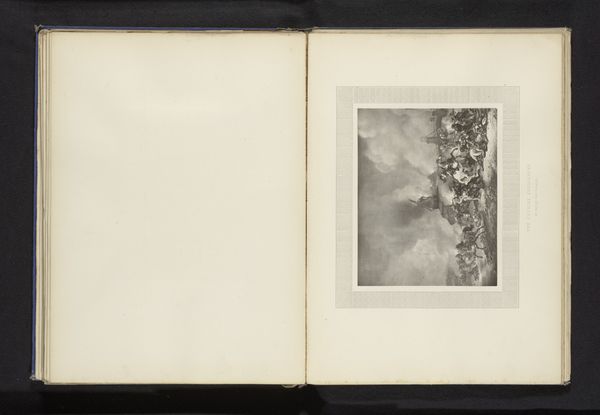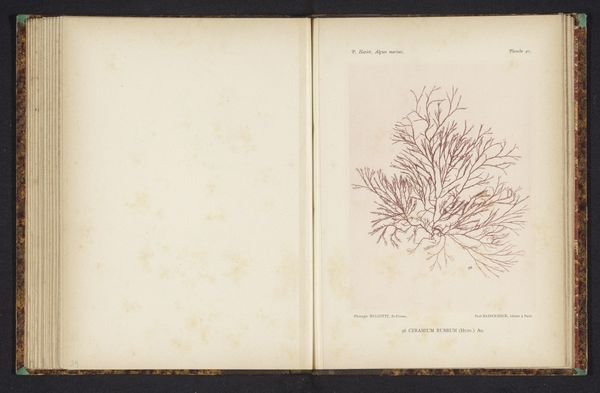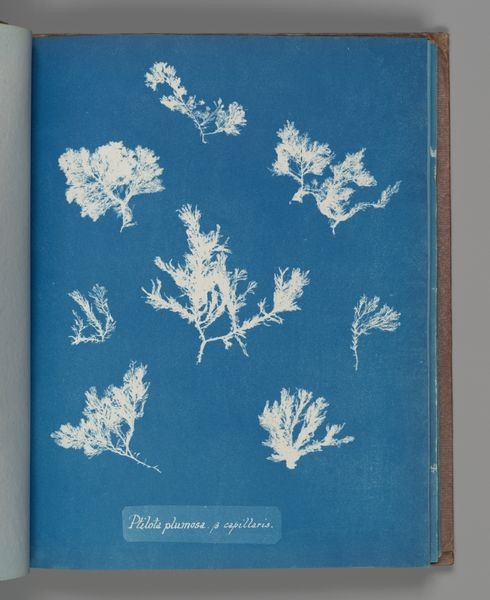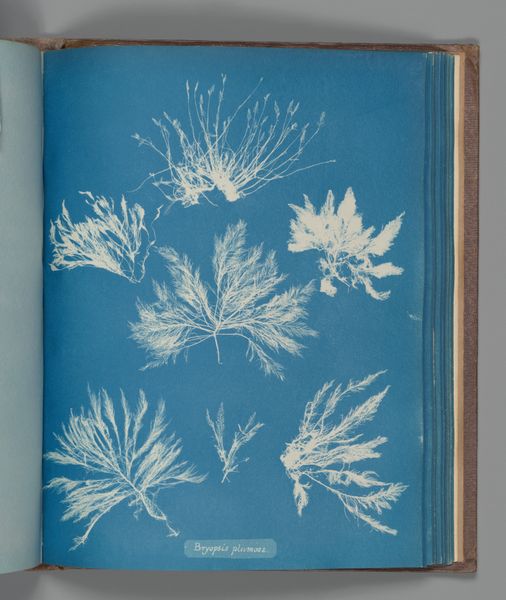
print, contact-print, photography
#
aged paper
#
toned paper
#
light pencil work
# print
#
contact-print
#
photography
#
underpainting
#
plant
#
botanical art
#
watercolor
Dimensions: 22.1 x 18.1 cm (8 11/16 x 7 1/8 in.), irregularly trimmed
Copyright: Public Domain
Curator: William Henry Fox Talbot created "Sisymbrium Cumingianum" in 1839. It's currently housed here at the Metropolitan Museum of Art. Editor: It’s ghostly, almost x-rayed. The stark white plant against that faded sepia…a rather compelling contrast in tones. Curator: This contact-print method speaks to Talbot's experiments with early photographic processes, moving away from solely relying on artistic representations in botanical studies and, instead, embracing light. Editor: Indeed. The stark whiteness, the silhouettes formed by the contact print—it removes the object from any specific context and almost abstracts it. It's about the lines, the branching structure... a pure study of form. Curator: This image also emerged during a pivotal moment. The scientific and intellectual circles were engaged in intense debate regarding the credibility of photography, particularly in scientific applications. Talbot presented these images to challenge long-held perceptions. Editor: I find the tonal range quite limited, but intentionally so, I believe. The warm, unevenly toned background seems to push the delicate forms forward, making the plant stand out with clarity. What might watercolor had done for botany this early photo tries to do... with its own stark and limited palate. Curator: His commitment to this "pencil of nature" was both ingenious and impactful, demonstrating that scientific illustration wasn't solely dependent on the artist’s interpretation, but now captured nature itself. This opened a floodgate in the scientific community regarding botanical illustrations. Editor: Agreed, Talbot gives us something elemental here: shape, form, texture captured via this new process, rather than an interpretation of the eye of a trained botanical illustrator, a key step into new visual literacy! Curator: Indeed. Seeing "Sisymbrium Cumingianum" today really makes one appreciate its profound influence on art and the sciences. Editor: For me, it's a compelling reminder that photography started as an exploration of simple, elegant form as much as a capture of reality.
Comments
No comments
Be the first to comment and join the conversation on the ultimate creative platform.

